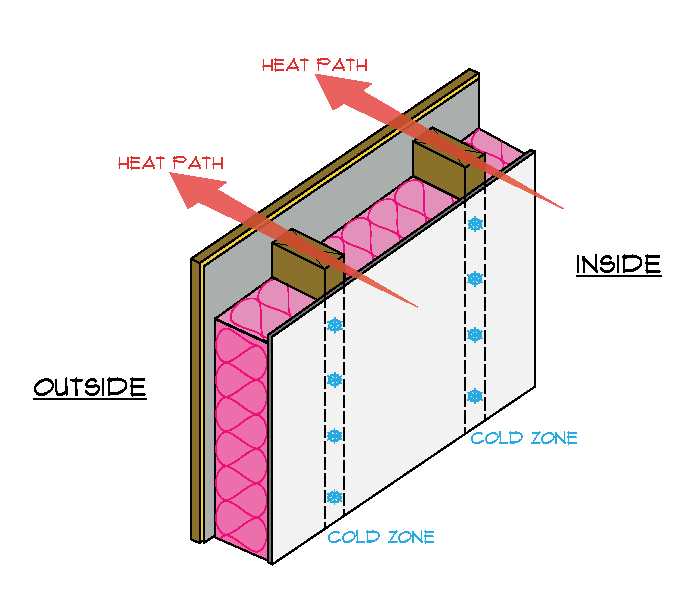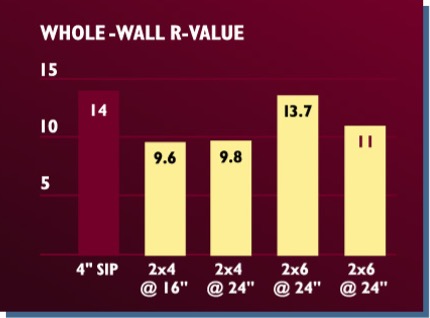SIPS R-Values
Structural Insulated Panels or SIPs R-Values are consistently higher than fiber glass insulation.
SIPs R-Values
The insulation used in your building envelope, can make the difference in paying thousands of dollars over the lifetime of your home. All insulations are measured by R-Value, which is the thermal resistance of the material. The higher the R-Value, the better the insulation should perform. Studies have found however that the R-value testing methods are somewhat flawed, in that they don’t take thermal mass into account. Also, they are tested in perfect conditions in a dry air laboratory, not reflecting real world field conditions.
With fiberglass (the pink stuff), any voids in the wall, too much ‘stuffing of the material’, moisture, and getting the paper face attached just right, can all affect its performance. Not to mention the studs on 16” centers (wood has an R-Value of 1 per inch), which reduce your R-Value and create a thermal bridge.
A study by Oak Ridge Laboratories found that a typical home with Studs and fiberglass insulation, rated at R-13, will actually perform closer to R-9, while a SIPS home will perform at its stated R-Value. This is due to the fact that SIPS create a perfect air barrier. The EPS foam (R-4 per inch) extends to the top/bottom, left & Right to stop air movement. In addition, you will have far fewer studs in a SIP Home.
EPS also has thermal mass properties, so it will maintain the temperature of your home far longer than simple fiberglass (which is actually used in some filters to allow air to pass through it).

In a conventional home, heat loss occurs in breaks in the insulation where there are studs, also called thermal bridging. SIP panels provide continuous insulation.
Compare SIPs R-Values to Fiberglass Insulation
The below chart compares the R-Values for both fiberglass insulation and SIPS panels. This barely scratches the surface as a SIPS home is also a far tighter home, meaning less air is able to leak out. This greatly improves your energy savings.
Panel Thickness
R-Value at 40F
Performance Value Compared to Fiberglass
4 1/2″ SIP
R-15
R-24
6 1/2″ SIP
R-24
R-36
8 1/4″ SIP
R-31
R-45
10 1/4″ SIP
R-40
R-60
12 1/4″ SIP
R-48
R-70
SIPs R-Value is higher than a stud wall with fiberglass insulation
The Oak Ridge National Laboratory study compares a 4 ½” SIP Whole wall R-Value to a comparable stick-framed wall. Notice the SIP outperforms all versions of a stud wall with fiberglass tested.

For even higher R-values, consider NEOPOR
For your high-performance home, to get even higher R-Values, you might consider using a NEOPOR foam core. This is basically EPS infused with graphite to increase the R-Value per inch of your panels.
If you need to get a higher R-value but need a thinner SIP, this is the way to achieve that. Neopor has a rating of R-5 per inch at 75F.
